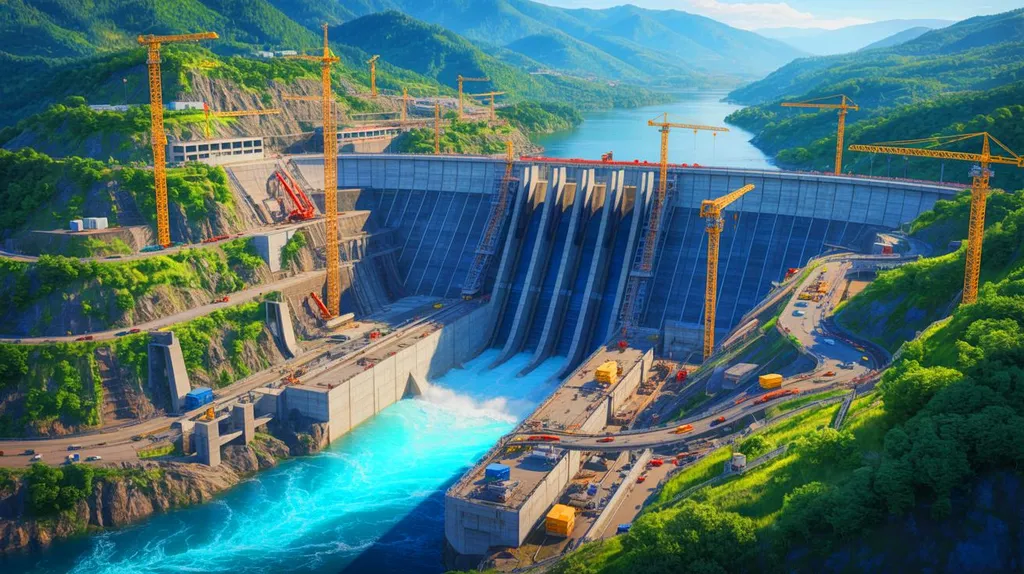In the heart of China’s agricultural landscape, a monumental water infrastructure project is reshaping the future of grain production, offering valuable insights for global water management and agricultural sustainability. The Middle Route of the South-to-North Water Diversion Project (MR-SNWDP), a mega water infrastructure initiative, has been the subject of a groundbreaking study led by Yuntong Zhao from the School of Public Policy and Management at Xi’an Jiaotong University. The research, published in the journal ‘npj Sustainable Agriculture’ (which translates to ‘npj Sustainable Agriculture’), provides a compelling narrative of how strategic water allocation can boost agricultural productivity and food security.
The study employs the Synthetic Control Method to evaluate the MR-SNWDP’s impact on agricultural water consumption and grain production in Henan, a major grain-producing province. The findings are striking: from 2010 to 2020, the MR-SNWDP has consistently increased both total water supply and agricultural water consumption in the region. This surge in water availability has translated into a significant boost in grain production, with noticeable effects from 2015 and a marked increase in grain output post-2017.
Yuntong Zhao, the lead author of the study, emphasizes the broader implications of these findings. “Our research not only advances the theoretical framework for evaluating large-scale water infrastructure projects but also offers actionable insights for improving global water management and agricultural sustainability,” Zhao states. This study is a testament to the transformative power of strategic water allocation in enhancing agricultural productivity and ensuring food security.
The commercial impacts of such projects are profound, particularly for the energy sector. As water resources become increasingly scarce, the efficient allocation and management of water for agricultural use can mitigate the strain on energy resources required for water extraction and distribution. This synergy between water and energy management is crucial for sustainable development, offering a blueprint for other regions grappling with similar challenges.
Moreover, the study highlights the importance of long-term planning and investment in water infrastructure. As Zhao notes, “The positive effects of the MR-SNWDP on grain production became evident only after several years, underscoring the need for patient, sustained investment in such projects.” This insight is particularly relevant for policymakers and investors looking to balance immediate needs with long-term sustainability goals.
The research also underscores the need for robust evaluation methods to assess the impact of large-scale infrastructure projects. The Synthetic Control Method used in this study provides a powerful tool for comparative analysis, enabling researchers to simulate counterfactual scenarios and measure the true impact of such initiatives. This methodological advancement is a significant contribution to the field, offering a more nuanced understanding of the complex interplay between water resources, agricultural productivity, and food security.
As the world grapples with the challenges of climate change, population growth, and resource scarcity, the lessons from the MR-SNWDP are more relevant than ever. The study’s findings provide a compelling case for strategic water allocation and investment in water infrastructure, offering a roadmap for sustainable agricultural development. For the energy sector, this research underscores the importance of integrating water management strategies into broader sustainability efforts, ensuring a more resilient and efficient use of resources.
In conclusion, the study led by Yuntong Zhao from Xi’an Jiaotong University offers a compelling narrative of how strategic water allocation can transform agricultural productivity and food security. Published in ‘npj Sustainable Agriculture’, the research provides valuable insights for policymakers, investors, and researchers, highlighting the need for long-term planning, robust evaluation methods, and integrated water management strategies. As the world looks to the future, the lessons from the MR-SNWDP offer a beacon of hope and a blueprint for sustainable development.

